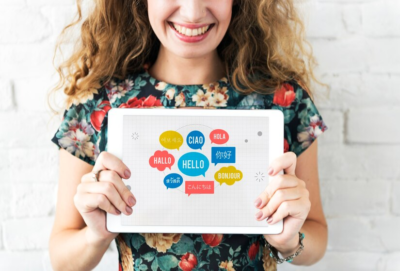Machine Translation vs. Human Translation: Which is Best?
The translation industry has grown significantly in recent years, and with the advancements in technology, the debate over which is the best method of translation – Machine Translation (MT) or Human Translation (HT) – has become a hot topic. In this article, we will examine the pros and cons of both MT and HT to determine which the best option for different situations is.
What is Machine Translation (MT)?
Machine Translation refers to the use of computer software to automatically translate text or speech from one language to another. This method of translation is based on the use of algorithms and statistical models to analyze and translate language data
How does Machine Translation work?
Machine Translation relies on large amounts of language data to train its algorithms and statistical models. The software uses this data to identify patterns and relationships between the source and target languages and to generate translations that are accurate and culturally aware. The quality of MT depends on the quality and quantity of language data that is used to train the software, as well as the sophistication of the algorithms and models that are used.
What are the Advantages of Machine Translation?
Speed and Efficiency
One of the biggest advantages of MT is its speed and efficiency. It can quickly translate large volumes of text or speech, making it ideal for situations where time is of the essence, such as in the case of news articles, legal documents, or customer support inquiries.
Cost-effectiveness
MT can also be more cost-effective than HT, especially for large-scale projects that require the translation of a large volume of text or speech. It eliminates the need for human translators, which can save time and reduce costs.
Consistency and Standardization
Another advantage of MT is its ability to produce consistent and standardized translations. The software is designed to follow a set of rules and guidelines, which can help to ensure that the translations are accurate, culturally aware, and consistent across different languages.
What are the Limitations of Machine Translation?
Accuracy
One of the main limitations of MT is its accuracy. The software is limited by the quality and quantity of language data that is used to train it, and it may not always be able to accurately translate text or speech that is complex, idiomatic, or culturally specific.
Cultural and Contextual Awareness
MT may also lack cultural and contextual awareness, as it does not have the ability to understand and interpret the cultural nuances and context that are unique to each language and culture. This can lead to translations that are insensitive, inappropriate, or simply incorrect.
Lack of Human Touch
MT is also limited by the lack of human touch. Translations generated by MT are not personalized or customized, and they may not always convey the intended meaning or tone. They may also lack the creativity and nuance that is possible with HT.
What is Human Translation (HT)?
Human Translation refers to the process of translating text or speech from one language to another by a human translator. This method of translation is based on the expertise and knowledge of the translator, who uses their understanding of language, culture, and context to accurately and effectively translate text or speech.
How does Human Translation work?
Human Translation relies on the skills and expertise of the translator, who use their knowledge of the source and target languages, as well as their understanding of culture, context, and tone, to translate text or speech. The quality of HT depends on the experience, knowledge, and skills of the translator, as well as the quality of the translation tools and resources that
What are the Advantages of Human Translation (HT)?
Accuracy and Cultural Awareness
Human translators have a deep understanding of the source and target languages, as well as their cultural nuances and context. This allows them to produce translations that are accurate, culturally-aware, and culturally-sensitive, ensuring that the intended meaning and tone are conveyed.
Customization and Personalization
Human translators have the ability to personalize and customize their translations to meet the specific needs and requirements of their clients. They can take into account the intended audience, the purpose of the translation, and any other relevant factors to produce a translation that is tailored to the client’s needs.
Flexibility and Adaptability
Human translators have the ability to adapt and be flexible in their approach to translation. They can work with a variety of text types, styles, and formats, and they can quickly adjust their approach as needed to meet the changing needs of their clients.
Expertise and Experience
Human translators have a wealth of expertise and experience in their field, allowing them to provide high-quality translations that are accurate, culturally aware, and culturally sensitive. They have a deep understanding of the source and target languages, as well as the cultural and historical context of the text or speech being translated.
Attention to Detail
Human translators have the ability to pay close attention to detail, ensuring that their translations are accurate and free from errors. They have the ability to double-check their work, making sure that the translations are error-free and meet the highest standards.
Creative and Nuanced
Human translators have the ability to bring creativity and nuance to their translations, ensuring that the translations are not just accurate, but also engaging and enjoyable to read. They can add their own personal touch and style to their translations, making them unique and memorable.

What are the Limitations of Human Translation (HT)?
Time-Consuming
Human translation is often a time-consuming process, especially for large-scale projects or projects with tight deadlines. Translators need to carefully review and translate each sentence, and this process can take a significant amount of time.
Costly
Human translation services can be expensive, especially for complex or specialized projects. The cost of hiring a human translator can be several times higher than the cost of using machine translation software, making it less accessible for small businesses or individuals with limited budgets.
Limited Availability
Human translators may not be readily available, especially if they specialize in a particular language or subject matter. It can take time to find the right translator for a project, and there may be delays or additional costs if the project requires a translator who is not readily available.
Human Error
Although human translators are trained professionals, they are still susceptible to human error. Translators can make mistakes in their translations, including typos, grammatical errors, or incorrect translations. This can result in inaccuracies in the final translation, which can impact the quality and accuracy of the final product.
Bias and Subjectivity
Human translators bring their own biases and subjective interpretations to the translation process. This can result in translations that are not neutral or impartial, and may not accurately reflect the intended meaning of the source text.
Limited Consistency
Human translators may not have the ability to maintain consistent terminology and style throughout a large translation project, especially if multiple translators are involved. This can result in inconsistencies in the final product, which can impact its quality and overall readability.

Seven Reasons to Choose Ennovatives as Your Translation Partner
Expertise and Experience
Ennovatives has a team of experienced and professional translators who have extensive knowledge and expertise in their field. They have a deep understanding of the source and target languages, as well as the cultural and historical context of the text or speech being translated.
High Quality Translation
Ennovatives is dedicated to delivering high-quality translations that are accurate, culturally aware, and culturally sensitive. Their team of experts ensures that each translation is carefully reviewed and edited to ensure its quality and accuracy.
Affordable Pricing
Ennovatives offers competitive pricing for its translation services, making it accessible for businesses and individuals of all sizes. They strive to provide the best value for their clients, delivering high-quality translations at an affordable cost.
Efficient and Timely Delivery
Ennovatives understands the importance of meeting deadlines and delivering translations on time. Their team is dedicated to ensuring that each project is completed efficiently and on time, so that their clients can receive their translations in a timely manner.
Personalized Service
Ennovatives provides personalized service to each of their clients, ensuring that their specific needs and requirements are taken into account. They work closely with their clients to understand their goals and objectives, and to develop customized solution that meets their needs.
Secure and Confidential
Ennovatives take the security and confidentiality of their client’s information seriously. They have strict security protocols in place to protect the privacy of their client’s data and ensure that their translations are kept confidential.
Technology and Automation
Ennovatives leverage the latest technology and automation tools to streamline their translation process and provide more efficient and accurate translations. This allows them to deliver high-quality translations at an affordable cost and with quick turnaround times.
Machine Translation vs. Human Translation: Which is Best?
In conclusion, both Machine Translation and Human Translation have their own strengths and weaknesses, and the best method of the translation will depend on the specific needs and requirements of each project. A combination of MT and HT can often provide the best results, leveraging the strengths of both methods to produce accurate, culturally-aware, and cost-effective translations that meet the needs of the target audience.
It’s important for translators, businesses, and organizations to carefully consider their options and choose the best method of translation for their specific needs. By doing so, they can ensure that their translations are accurate, culturally aware, and delivered in a timely and cost-effective manner and that they effectively reach their target audience.



